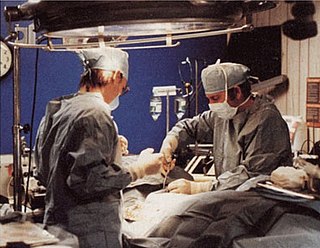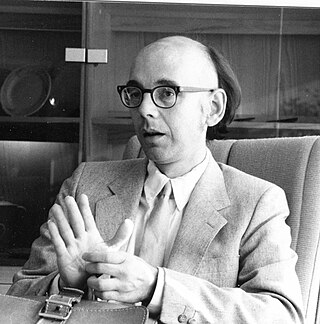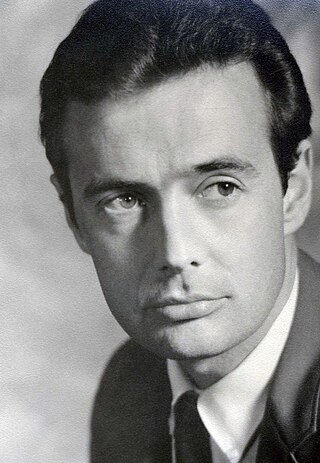
Cryonics is the low-temperature freezing and storage of human remains, with the speculative hope that resurrection may be possible in the future. Cryonics is regarded with skepticism within the mainstream scientific community. It is generally viewed as a pseudoscience, and its practice has been characterized as quackery.

Ralph C. Merkle is an American computer scientist and mathematician. He is one of the inventors of public-key cryptography, the inventor of cryptographic hashing, and more recently a researcher and speaker on cryonics.
Extropianism, also referred to as the philosophy of extropy, is an "evolving framework of values and standards for continuously improving the human condition". Extropians believe that advances in science and technology will some day let people live indefinitely. An extropian may wish to contribute to this goal, e.g. by doing research and development or by volunteering to test new technology.
The Alcor Life Extension Foundation, most often referred to as Alcor, is an American nonprofit, federally tax-exempt, 501(c)(3) organization based in Scottsdale, Arizona, United States. Alcor advocates for, researches, and performs cryonics, the freezing of human corpses and brains in liquid nitrogen after legal death, with hopes of resurrecting and restoring them to full health if the technology to do so becomes available in the future. Cryonics is regarded with skepticism within the scientific community and has been characterized as quackery and pseudoscience.
James Hiram Bedford was an American psychology professor at the University of California who wrote several books on occupational counseling. He is the first person whose body was cryopreserved after legal death, and remains preserved at the Alcor Life Extension Foundation.
Michael G. Darwin, formerly known as Michael Federowicz, is a former president of cryonics organization Alcor Life Extension Foundation. He was president from 1983 to 1988, and research director until 1992. He was also the founder and president of BioPreservation, Inc., and a cofounder, member of the board of directors, and director of research at Twenty-First Century Medicine from 1993 to 1999.
Jerry Donnell Leaf was Vice President and Director of the cryonics organization Alcor Life Extension Foundation, and President of the cryonics service firm Cryovita, Inc. until his death in 1991.

Thomas K. Donaldson was a mathematician and well-known cryonics advocate. He was born in the state of Kentucky in the United States, and took his Ph.D. from the University of Chicago in 1969. He also lived in Sunnyvale, California, and for many years in Canberra, Australia, where he taught mathematics at Australian National University. He founded both the Cryonics Association of Australia and the Institute for Neural Cryobiology, which has funded ground-breaking research in cryopreservation of brain tissue.
Curtis Henderson was a pioneer in the practice of cryonics.
Saul Kent was a life extension activist, and co-founder of the Life Extension Foundation, a dietary supplement vendor and promoter of anti-aging research. He was also a pioneer in the practice of cryonics, and was a board member of the cryonics organization Alcor Life Extension Foundation.
Frederick Rockwell Chamberlain III and Linda Chamberlain founded the cryonics organization Alcor Life Extension Foundation. Their long and continued history of activism in cryonics make them among the most well-known cryonics pioneers. David Pascal wrote in the November/December 2005 issue of the Mensa Bulletin that, second to the man credited with the original idea for cryonics, Robert Ettinger, the Chamberlains have contributed more than anyone to the field of cryonics.
KrioRus is the first cryonics company in Russia. It was founded in 2005 by the Russian Transhumanist Movement NGO. It is the only cryonic company in Europe to possess an own cryonic storage. The company offers the services of freezing the entire bodies or heads of clients in liquid nitrogen with a plan to revive them if such a technology is developed, but takes no legal obligations to do so.
Antonei Benjamin Csoka is a biogerontologist at Howard University who works on the molecular biology of aging, regenerative medicine, and epigenetics.
Charles Platt is a British author, journalist and computer programmer. He relocated from England to the United States during 1970 and is a naturalized U.S. citizen. He has one child, Rose Fox, who edits science-fiction, fantasy, and horror book reviews. Platt is the nephew of Robert Platt, Baron Platt of Grindleford.
Dora Kent was the subject of a 1988 legal controversy about whether she had been murdered to facilitate her cryonic suspension. She was Alcor's eighth patient and the oldest at that time to ever be cryopreserved. She was the mother of Saul Kent, a board member of Alcor. In her earlier years, Kent worked as a dressmaker in New York City.

Dick Clair was an American television producer, actor and television and film writer, best known for the television sitcoms It's a Living, The Facts of Life, and Mama's Family.

Cryopreservation or cryoconservation is a process where biological material - cells, tissues, or organs - are frozen to preserve the material for an extended period of time. At low temperatures any cell metabolism which might cause damage to the biological material in question is effectively stopped. Cryopreservation is an effective way to transport biological samples over long distances, store samples for prolonged periods of time, and create a bank of samples for users. Molecules, referred to as cryoprotective agents (CPAs), are added to reduce the osmotic shock and physical stresses cells undergo in the freezing process. Some cryoprotective agents used in research are inspired by plants and animals in nature that have unique cold tolerance to survive harsh winters, including: trees, wood frogs, and tardigrades.The first human corpse to be frozen with the hope of future resurrection was James Bedford's, a few hours after his cancer-caused death in 1967.[15] Bedford's is the only cryonics corpse frozen before 1974 still frozen today.
Cryonics Institute (CI) is an American nonprofit foundation that provides cryonics services. CI freezes deceased humans and pets in liquid nitrogen with the hope of restoring them with technology in the future.
William “Bill” Faloon is an author, life extensionist, and co-founder of the Life Extension Foundation, the Church of Perpetual Life, and the FDA Holocaust Museum.
The Shandong Yinfeng Life Science Research Institute, is a life science research institute and a cryonics services provider in Jinan, Shandong, China. It was founded in 2015, and it is a division of Yinfeng Biological Group. The institute is the first organization providing cryonics services in China. In 2017, the institute made the first cryopreserved patient in China. The institute cryopreserves cells, tissues, human bodies, and animals, including dogs. The institute cooperates closely with the Shandong Yinfeng Life Science Foundation that funds the institute.




